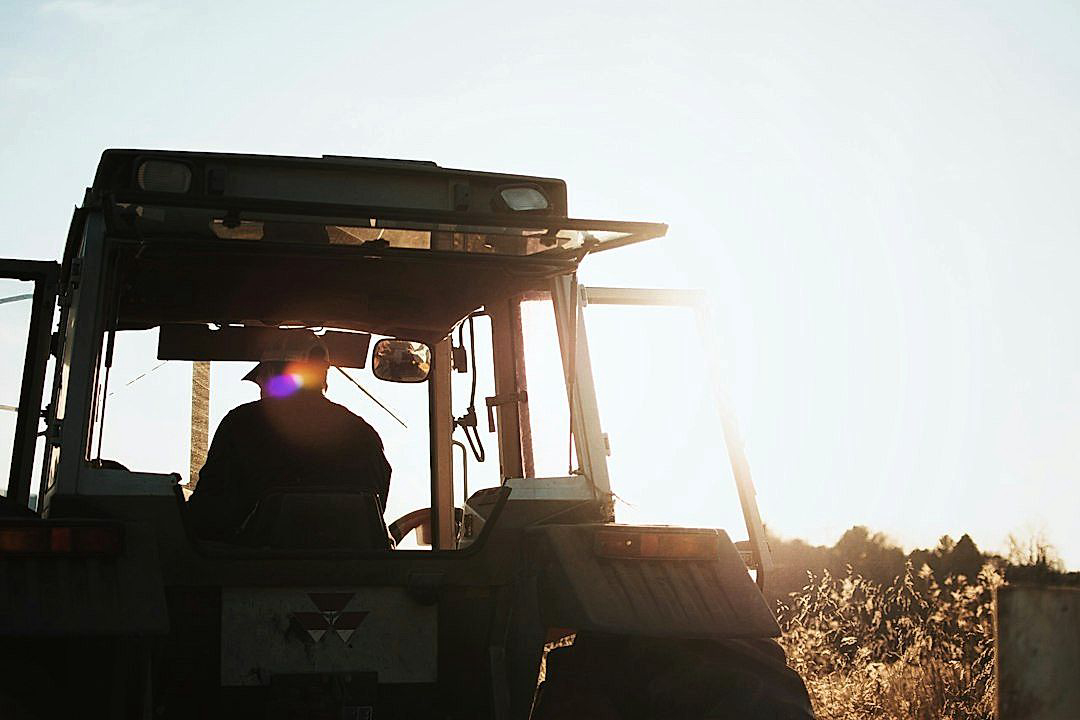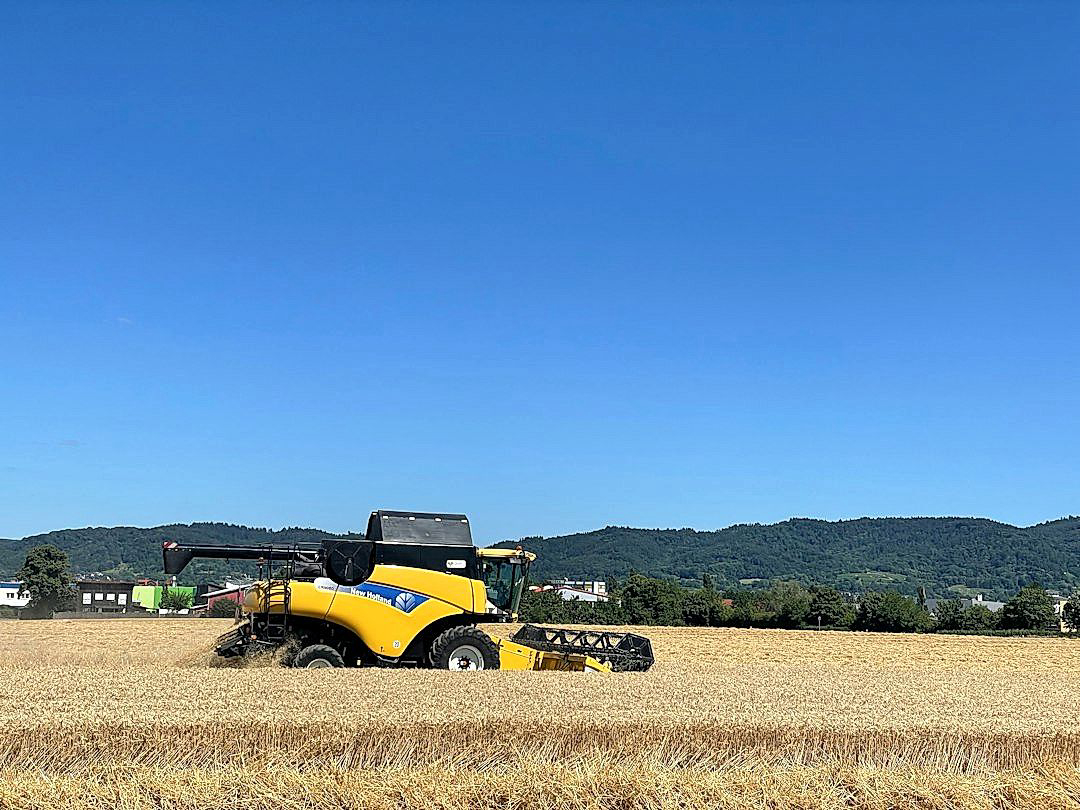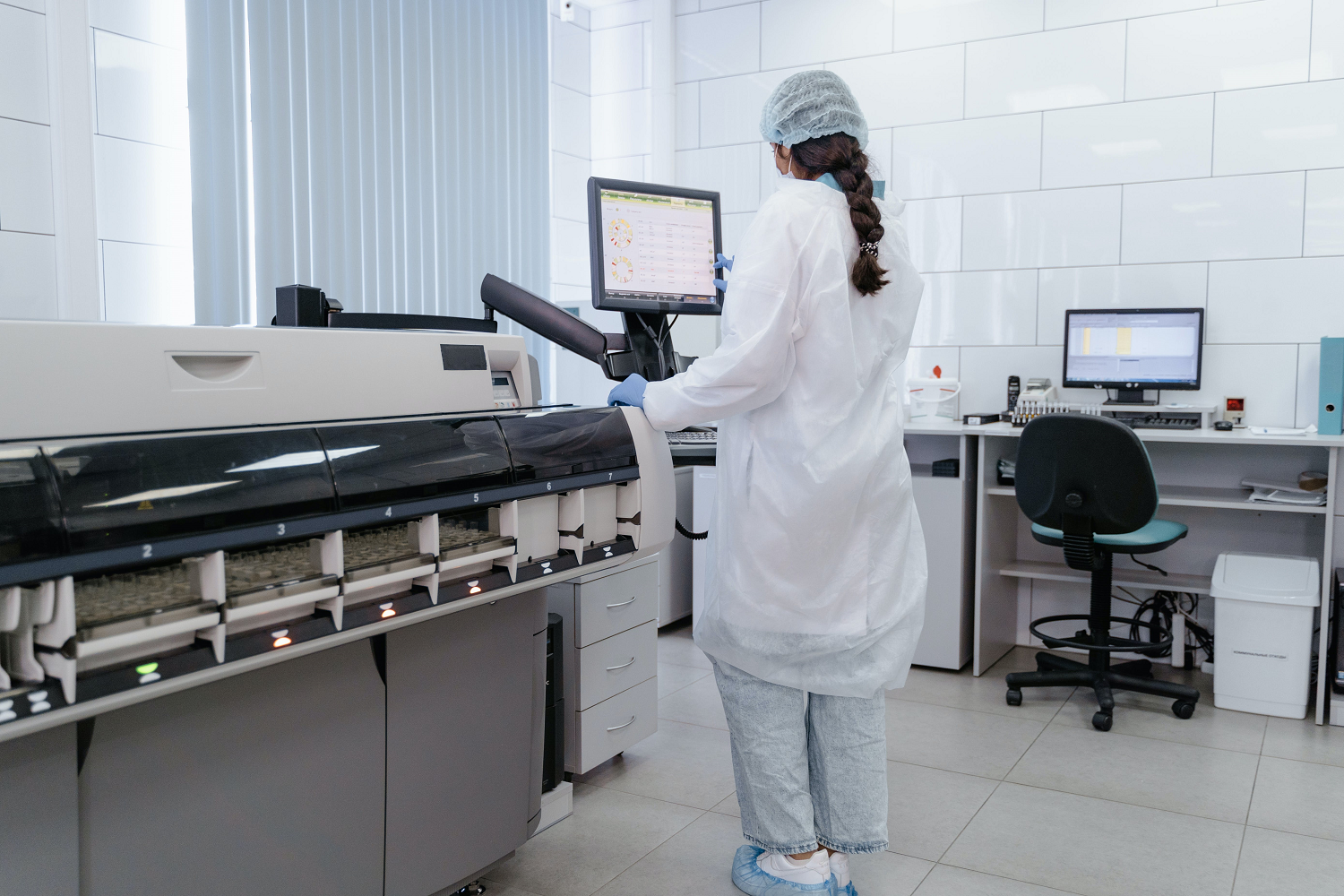In agriculture, the continuous pursuit of innovation and efficiency is essential.
One avenue that is carving out a significant niche for itself is drone technology.
Adopted by farmers across the globe, it’s revolutionizing the way the agricultural sector functions.
These unmanned aerial devices are not just toys for enthusiasts anymore; they have become vital tools in modern farming.
In particular, they are making substantial strides in how produce farming operates.
This article explores the varied applications and potential benefits of implementing drones in the context of produce farming.
Contents [hide]
Drone Uses Shaping Produce Farming
1. Crop Monitoring and Data Collection
In the realm of produce farming, the use of drones has been a notable technological advancement, specifically in the aspects of crop monitoring and data collection.
Drones, also referred to as Unmanned Aerial Vehicles (UAVs), are equipped with high-resolution cameras and sensors that can capture detailed aerial images and data of the farmland.
This bird’s eye view allows farmers to observe their crops from a new perspective, thus delivering comprehensive field analysis and aiding in making informed decisions.
With drone technology, farmers can now monitor the health, growth, and development of their crops more efficiently than traditional manual surveying methods.
Drones not only provide visual data but also help in collecting crucial information such as plant height, plant count, and canopy cover.
These specific data points are not feasible to gather manually on a large scale, and this is where drones come into play.
The data collected by drones is processed and analyzed to create various crop health indices like Normalized Difference Vegetation Index (NDVI), which shows the overall health of the plant.
Other indices include Leaf Area Index (LAI), that measures the total leaf area in relation to the ground area, and Crop Water Stress Index (CWSI), which indicates the water stress in plants – all integral to crop management.
Drones can be programmed to follow predefined flight paths using Global Positioning System (GPS), ensuring that the whole farmland is covered and no area is left unmonitored.
This systematic approach of data collection ensures the uniformity of information and decreases the chances of any area being overlooked.
The high accuracy and precision of drone-based data collection greatly reduce the margin of error in crop assessment.
With real-time monitoring and analysis, drones allow for proactive measures against potential threats, rather than reactive measures used after the problem has occurred.
Using drones for monitoring and data collection is also more time and cost-effective in comparison to traditional methods like satellite imaging or manual labor.
With advancements in technology, future drones are expected to be equipped with spectral sensors that can detect disease or pest infestations before they become visible to the naked eye.
In a nutshell, drone technology is not only revolutionizing the ways of crop monitoring and data collection but also paving the way for more efficient and sustainable farming methods.
2. Pest Detection and Management
In the vast and interconnected ecosystem of farming, pests pose a significant threat to healthy crop yield.
The traditional pest detection and management processes can be quite labor-intensive and time-consuming.
Historically, these processes have relied upon manual labor to monitor and manage the pest populations across hectares of lands.
The advent of drones has revolutionized this age-old pest management process by making it faster, more efficient, and less labor-intensive.
Equipped with state-of-the-art sensors and imaging capabilities, drones have become a game-changer in the field of pest detection and management in produce farming.
Drones, otherwise known as Unmanned Aerial Vehicles (UAVs), can monitor large swathes of agricultural land for pest activity swiftly and efficiently.
UAVs use thermal, hyperspectral, or multispectral imagers that can identify pest-infested areas in real-time with pinpoint accuracy.
These drones can identify subtle changes in plant color or thermal signatures that may signify pest infestation.
Once the affected areas have been identified, drones can localize treatment, reducing pesticide use and promoting eco-friendly farming practices.
Drones can deliver targeted pesticide sprays to the infested areas, minimizing pesticide exposure to non-target areas and species.
Furthermore, the use of drones enable continual monitoring of the crops, allowing for real-time updates on pest spread and effectiveness of the treatment applied.
This drone-based, precision pest management system helps reduce costs and improve crop yields, making it a win-win situation.
Considering the importance of sustainable farming for the future, the application of drones for pest detection and management appears well poised to become the new industry standard.
Through increased efficiency, accuracy, and sustainability, drones can provide a great asset to farmers and help shape the future of produce farming.
So, instead of laborious, time-consuming inspections and blanket pesticide applications, farmers can make smart, informed decisions using real-time data from drone-aided pest detection and management.
By harnessing the power of technology, farmers can tackle pest problems proactively with innovative solutions.
3. Precision Crop Spraying
Drone technology is increasingly being used in agriculture, most notably in the form of precision crop spraying.
Using drones for crop spraying is not only more efficient but also reduces the amount of chemicals used.
Drones can pinpoint the exact locations that need spraying, eliminating unnecessary coverage and minimizing chemical exposure to non-target areas.
The adoption of drone technology for precision crop spraying is a significant leap forward in sustainable farming practices.
As technologies continue to advance, drones are becoming an indispensable tool for farmers seeking to maximize yield and minimize environmental impact.
These agricultural drones equipped with advanced sensors and imaging capabilities deliver accurate data for targeted crop spraying.
This results in a more efficient use of resources and greater crop productivity.
Drones also offer a safer option for farmers and workers, eliminating the need for traditional, potentially dangerous crop-dusting methods.
Not only does this decrease the risk of human exposure to harmful chemicals, but it also reduces the physical workload for farmers.
Precision crop spraying with drones has a significant effect on the cost-effectiveness of farming operations.
The reduction in waste, labor, and resource use can have a significant impact on a farm’s bottom line.
Additionally, drones offer farmers the flexibility to spray crops in difficult to reach areas or during adverse weather conditions where traditional methods are not possible.
Beyond applying pesticides, drones can also be used for the application of fertilizers and soil conditioners.
It’s easy to see why farmers are adopting this innovative technology – it’s a game changer not only for individual farming operations, but also for the future of sustainable agriculture.
The benefits of precision crop spraying with drones extend far beyond the economic; they are key to a more sustainable, efficient, and safer way of farming.
4. Planting New Crops
One of the most significant contributions of drones to modern farming is their utility in planting new crops.
Drone technology has revolutionized the old and traditional methods of sowing seeds, not only making the task more efficient but also more cost effective.
Drones are equipped with advanced devices that can scatter seeds over a field with remarkable precision, thereby improving the uniformity of crop distribution.
This has, in turn, contributed to increasing crop yields since drones ensure that they are planted in the most optimum patterns.
Moreover, drone technology has made it possible to plant seeds in places that were previously unreachable or too dangerous for human planters.
This advantage is particularly evident during planting season when farmers contend with unpredictable weather conditions and difficult terrains.
The flexibility and durability of drones enable farmers to continue their planting operations regardless of such challenging conditions.
In addition to planting seeds, drones can also be utilized to dispense fertilizers and other essential nutrients thereby ensuring healthy growth of the crops.
The accuracy afforded by drone technology ensures that these substances reach the crops effectively and in the correct quantities.
Farmers can also easily monitor the growth of their newly planted crops and take necessary measures if they detect any abnormalities in their growth and development.
Drones not only save the time and effort involved in traditional planting methods but they also reduce the number of manual hours put into the task.
This means that farmers can focus their resources and energy on other important areas in their farming operations.
Moreover, the utilization of drones in planting new crops contributes to the sustainability of farming practices since it reduces wastage of seeds.
It is important to note that while drones have considerably improved the planting process, there is still a need for farmers to make regular inspections and adjustments to ensure that the drones are performing their tasks accurately and efficiently.
Overall, the arrival of drone technology in agriculture has proven to be a game-changer, especially in the area of planting new crops.
As technology continues to evolve, the utility and effectiveness of drones in planting new crops is expected to reach new heights, bringing even more astonishing benefits to modern farming.
5. Irrigation System Analysis
Irrigation system analysis is a crucial aspect of produce farming that can greatly benefit from the use of drones.
With the ability to fly over large areas in a short amount of time, drones are perfect for inspecting and assessing the efficiency and effectiveness of irrigation systems on a farm.
Drones equipped with specialized sensors can detect areas where water distribution is uneven, identifying spots where crops might be getting too much or insufficient water.
This capability not only helps optimize water usage – an essential resource in agriculture, but also ensures that all crops receive an optimal amount of water.
This, in turn, can lead to better crop growth and increased yields, optimizing the overall productivity of the farm.
In addition, the data collected by drones can be utilized to detect leaks in irrigation systems that might otherwise go unnoticed.
Such leaks can lead to water wastage and can potentially damage crops and soil structures.
By identifying these issues early on, farmers can ensure that they are addressed promptly and thus minimize any adverse impacts.
Furthermore, drones can also be used in combination with other technology to create precise irrigation schedules based on the varying water needs of different crops, at different times in their growth cycle.
This customized approach can ensure that each crop gets just the right amount of water it needs to thrive.
The use of drones in irrigation system analysis can also drastically reduce labor requirements as the process is largely automated.
It eliminates the need for farmers or workers to manually check irrigation systems and water distribution across each field.
Moreover, as drones collect data in real-time, farmers can make immediate adjustments to their irrigation systems based on that data, resulting in immediate benefits.
By providing farmers with detailed, precise, and timely information about their irrigation systems, drones are significantly improving the ability of farmers to manage water use on their farms.
In the face of increasing water scarcity and rising costs of farm operations, such technology could provide a significant boost to the sustainability and profitability of produce farming.
6. Crop Health Assessment
The use of drones for crop health assessment is a major way that technology is shaping produce farming.
Drones can capture detailed images and data in real-time from above the crops that are difficult or impossible to obtain manually or from satellite images.
This cutting-edge technology allows farmers to quickly and efficiently assess the health of their crops over vast areas.
Identifying issues early such as disease or pest infestation can avoid significant costs and crop losses.
Through the use of specialized sensors, farmers can detect changes in crop health that may not be visible to the naked eye.
For instance, healthy crops reflect light in different ways compared to unhealthy ones and drones can capture these differences.
Based on the data captured, farmers can take necessary steps to address any health issues in their crops.
Thanks to drones, certain elements that may be affecting crop health – including lack of nutrients, inappropriate watering, or the presence of pests or disease can be pinpointed.
As a result, targeted interventions can be made, avoiding mass application of pesticides or fertilizers and potentially saving significant resources.
The data collected can be used to create crop health maps, providing farmers with a visual representation of the health status of their crops.
Drones also enable regular monitoring so farmers can track the effects of any interventions or changes in conditions over time.
The non-invasive nature of this technology, along with its capacity for accurate, large-scale assessment, makes it an incredibly valuable tool in modern farming.
This plays a key role in supporting sustainable farming practices and maximizing crop yields in a world of increasing food demands.
As drone technology continues to advance, it’s likely that their capacity for detailed, efficient, and accurate crop health assessment will become even more essential to the agricultural sector.
In summary, the use of drones in assessing crop health represents a significant technological advancement in produce farming, leading to cost savings, resource efficiencies, and ultimately, increased food production.
7. Harvest Optimization and Tracking
The use of drones in harvest optimization and tracking is an innovative strategy that has greatly customized the farming practice.
Drones have been instrumental in pinpointing the exact maturity stages of different crops , which is helpful in deciding optimal harvest times.
Moreover, drones, equipped with advanced imaging technologies, are able to identify crop variabilities.
The notion of drones capturing images overhead guiding a successful harvest season sounds far-fetched, but in reality, it’s a fascinating, practical application.
These inconsistencies might be due to different growth rates, pest damage, water access, or nutrient availability.
By assessing these variations, farmers can carry out harvest operations strategically, tackling one area of the field at a time based on crop maturity and readiness.
This application ensures that each crop is harvested at its peak, maximizing the yield and quality of the produce.
Furthermore, drones make harvest tracking much more efficient. With their ability to cover large areas quickly, they offer real-time tracking of the harvesting process.
This includes spatial data about the quantity of crop harvested and the areas that have been harvested.
By generating regular overviews of fields, drones can help detect obstacles or problems in various parts of the land, reducing the risk of crop damage during the harvest.
The invaluable data gathered by drones can also aid in strategic planning for future planting and harvest seasons, ensuring continual improvement and efficiency in farming operations.
Visitations on the farming site for inspections can be significantly reduced with drone technology, saving time and boosting efficiency.
On the ground, time-lapse photos from drones deliver an accurate overview of how the entire harvest is progressing.
This allows farm managers to make necessary adjustments to enhance the efficiency of their operations.
Hence, the use of drones for harvest optimization and tracking takes a great leap towards precision agriculture, ensuring the food security of the future.
The Bottom Line
The advent and integration of technology in agriculture have completely transformed the sector, providing solutions to various challenges that farmers face.
Tools such as sensors, drones, and automated machines have improved efficiency and accuracy in crop monitoring, pest management, crop spraying and planting, among other tasks.
Additionally, the ability to track irrigation system’s performance and crop health in real-time aids in prediction and quick decision-making, which significantly enhances yields.
Harvest optimization and tracking have also streamlined the post-production processes, further increasing farming profitability.
Thus, embracing technological advancements in agricultural practices ensures sustainable and productive farming.




